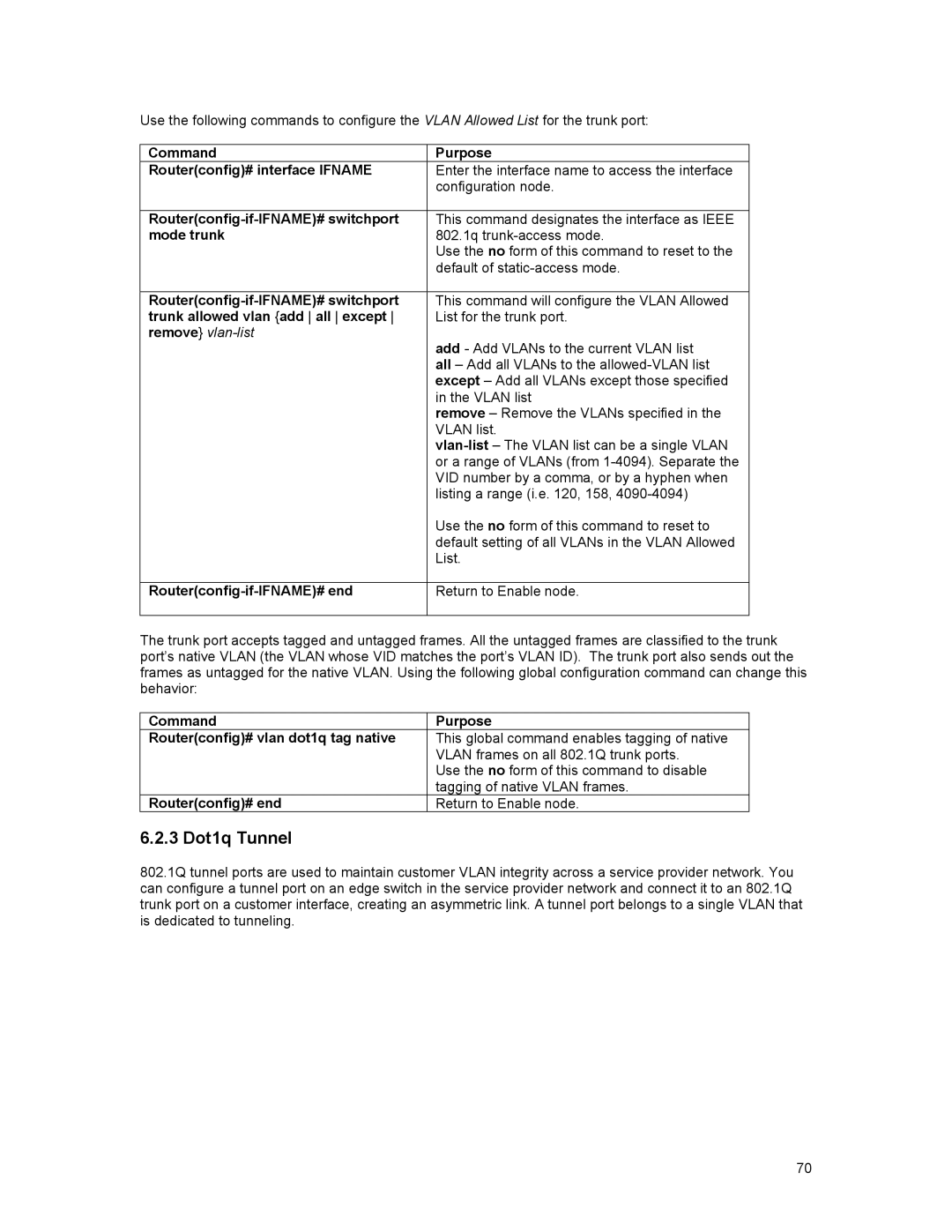Use the following commands to configure the VLAN Allowed List for the trunk port:
Command | Purpose |
Router(config)# interface IFNAME | Enter the interface name to access the interface |
| configuration node. |
|
|
This command designates the interface as IEEE | |
mode trunk | 802.1q |
| Use the no form of this command to reset to the |
| default of |
|
|
This command will configure the VLAN Allowed | |
trunk allowed vlan {add all except | List for the trunk port. |
remove} | add - Add VLANs to the current VLAN list |
| |
| all – Add all VLANs to the |
| except – Add all VLANs except those specified |
| in the VLAN list |
| remove – Remove the VLANs specified in the |
| VLAN list. |
| |
| or a range of VLANs (from |
| VID number by a comma, or by a hyphen when |
| listing a range (i.e. 120, 158, |
| Use the no form of this command to reset to |
| default setting of all VLANs in the VLAN Allowed |
| List. |
|
|
| Return to Enable node. |
|
|
The trunk port accepts tagged and untagged frames. All the untagged frames are classified to the trunk port’s native VLAN (the VLAN whose VID matches the port’s VLAN ID). The trunk port also sends out the frames as untagged for the native VLAN. Using the following global configuration command can change this behavior:
Command | Purpose |
Router(config)# vlan dot1q tag native | This global command enables tagging of native |
| VLAN frames on all 802.1Q trunk ports. |
| Use the no form of this command to disable |
| tagging of native VLAN frames. |
Router(config)# end | Return to Enable node. |
6.2.3 Dot1q Tunnel
802.1Q tunnel ports are used to maintain customer VLAN integrity across a service provider network. You can configure a tunnel port on an edge switch in the service provider network and connect it to an 802.1Q trunk port on a customer interface, creating an asymmetric link. A tunnel port belongs to a single VLAN that is dedicated to tunneling.
70
